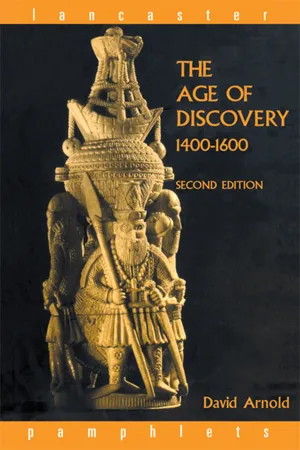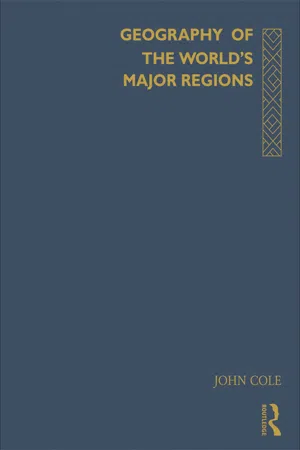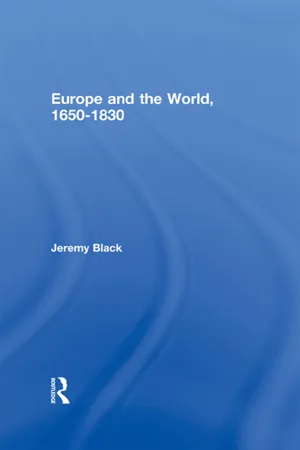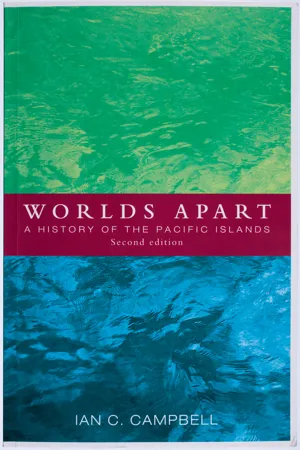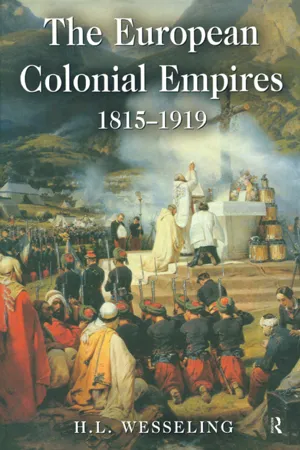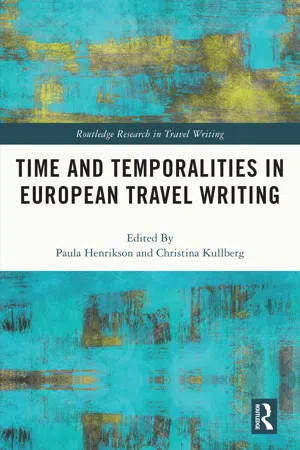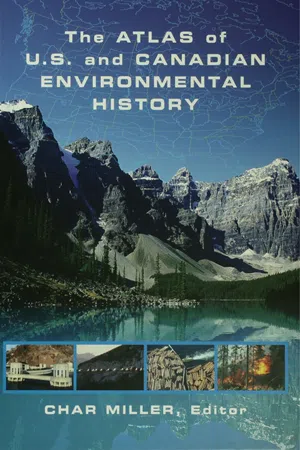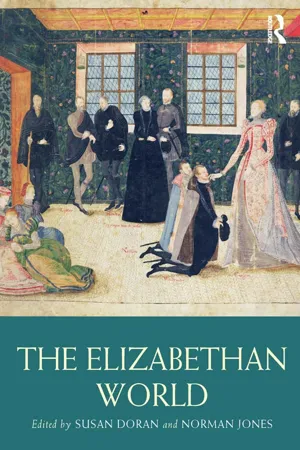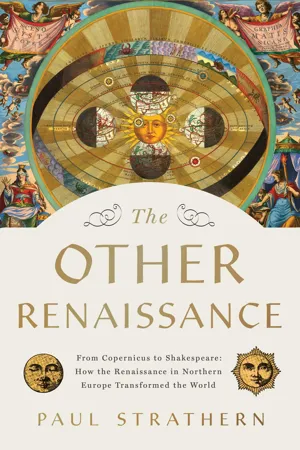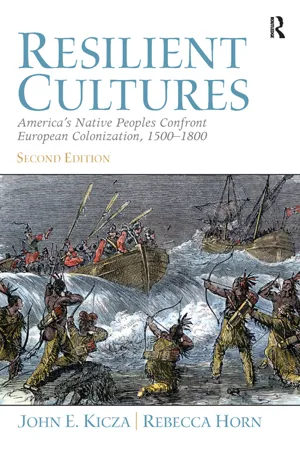History
European Exploration
European exploration refers to the period from the 15th to 17th centuries when European powers, such as Spain, Portugal, England, and France, embarked on voyages to discover new lands and establish trade routes. This era led to the colonization of the Americas, Africa, and Asia, and had a profound impact on global history, economics, and culture.
Written by Perlego with AI-assistance
Related key terms
12 Key excerpts on "European Exploration"
- eBook - ePub
- David Arnold(Author)
- 2013(Publication Date)
- Routledge(Publisher)
Part of the wider historical significance of the Age of Discovery was that it involved a long series of encounters between European and non-European peoples. These encounters varied enormously in character. Frequently they were characterized by European aggression, by massacre, kidnapping and rape, by wholesale plunder, enslavement and the brutal subjugation of indigenous peoples. But where the power of indigenous rulers was greater than that of the Europeans (as was the case across much of Asia from the Ottoman Empire in the west to Ming dynasty China in the east) Europeans found themselves in the role of supplicants and observers rather than of conquerors and settlers. However one-sided it might appear (and often was), this was an age of mutual discovery. Just as Europeans struggled to make sense of what they encountered in other continents, so too indigenous peoples around the globe tried to comprehend what the arrival of white men with mysterious ships and guns, with their strange religion, manners and customs, might signify. Few episodes in this period are more fascinating than the increasingly desperate efforts of the Aztec emperor Montezuma and his court to try to understand what the arrival of the Spanish invaders might mean for them – were they gods or just greedy men? European intruders variously met with curiosity or scorn, with outright resistance or some form of cooperation and attempt at accommodation, but, whatever the case, the result was an interactive history that left its mark, for good or ill, on both parties.The search for trade was a major factor impelling Europe's expansionist drives in the fifteenth and sixteenth centuries, but the period also saw important cultural and social changes emanating out from Europe as well. European languages – Portuguese, Spanish and latterly Dutch, French and English – began to spread to other continents and to be adopted by non-European peoples. A Christian presence was established in the Americas and in parts of Africa and Asia where it had not previously penetrated. While the number of white migrants to other continents was relatively small (especially compared to the mass migration of Europeans after 1815), significant numbers of settlers had already established themselves, particularly in the Americas, by the early seventeenth century. Other demographic changes, whose full significance might only be apparent later, were also underway, again especially in the Atlantic world. Catastrophic mortality among the native Americans following the arrival of the first Europeans gave rise to a search for new sources of labour on estates, plantations and mines and to the forced migration of African slaves to New World. By 1600 there were about 100,000 slaves in eastern Brazil alone and more than three times that number of Africans are believed to have been sent in slavery to the Americas over the course of the previous century. - eBook - ePub
- John Cole(Author)
- 2003(Publication Date)
- Routledge(Publisher)
The Ottoman Empire, centred on what is now Turkey, and with its capital at Constantinople, had been expanding for some time before 1500, by which date it held extensive territories in northeast Africa and southwest Asia, as well as roughly the southeastern quarter of Europe, reaching close to Prague and Vienna. In the Middle Ages there had been frequent if tenuous trade links between Europe and China, but by late in the fifteenth century the Ottoman Empire and, further north, the Khanate of Kazan and other states hostile to Christian Europe lay across trade routes. The rivalry between Christian Europe and Islam meant that the trade routes were at risk and could be blocked. The period of European Exploration that began towards the end of the fifteenth century was to some extent a response to this situation, a result of the attempt to find trade routes across the oceans between Europe and southern and eastern Asia. For several centuries during the later Middle Ages the Christian culture of Europe had been confined to a small part of the world, but in the later part of the fifteenth century Europeans started to extend their influence across the oceans and across northern Asia. The present form and distribution of countries, religions, languages and economic systems throughout the world can only be fully appreciated through a study of the global spread of European influence during what is sometimes referred to as the Columbian era after the explorer Christopher Columbus.FIGURE 2.1 The state of the world around 1500. The predominant form of subsistence is indicated for areas of the world not included in the principal empires and European states of the timeBefore the sixteenth century extensive empires covering large portions of the various continents had come and gone. Between 1405 and 1433 the Chinese admiral Cheng-ho ‘explored’ and carried the Chinese presence briefly into the Indian Ocean, as far as the shores of Africa and Arabia, but the possibility that China might have become the region of the world to build up a global influence ended abruptly as support for this endeavour suddenly stopped. It was the Europeans who made the breakthrough.In 1522 the crew of the Victoria completed the first (known) circumnavigation of the globe, executed in a westerly direction. The ship set sail from Seville (Spain) in 1519 under the command of the Portuguese navigator and explorer Ferdinand Magellan (1480– 1521), working then for Spain. Magellan himself was killed in the Philippines in 1521, but it is his name that is traditionally connected with the achievement. The return of the Victoria to Seville in 1522 symbolically ‘completed’ the work of various European explorers, most starting their voyages from Portugal or Spain (see Table 2.1 - eBook - ePub
- Professor Jeremy Black, Jeremy Black(Authors)
- 2013(Publication Date)
- Routledge(Publisher)
2 EXPLORATIONDOI: 10.4324/9781315012896-2Introduction
After discussion of Columbus and da Gama, exploration does not generally play a central role in the history of European expansion. It has a separate literature that is very distant from that of conquest, migration and trade. This is unfortunate, because exploration was important in a number of lights, including that of reconfiguring understanding of the world and of Europe’s part in it. Exploration, not discovery, is the key term: the peoples visited by Europeans did not need to be discovered.At the outset, methodological problems require explicit consideration, and serve as a warning about similar issues throughout this book. The standard interpretation of exploration offered in English-language works very much focuses on British explorers, such as James Cook and Mungo Park, with the addition, if a significant US readership is anticipated, of American explorers, particularly the Lewis and Clark expedition. This underrates or elides other categories of exploration. Three, in particular, stand out. First, exploration by other Western European countries, not only France and Spain, but also less prominent states: the United Provinces (Dutch), Denmark and Portugal. Second, exploration by Russians tends to be underrated, both maritime exploration and, more seriously, overland journeys from Russia. Third, there is a focus, in discussion of exploration, on official missions, and a top-down approach to exploration. This may be particularly appropriate for long-range voyages, but is less so for overland expeditions and, in particular, for the process of incremental gains in knowledge that was especially pronounced on the edges of the European world, especially in the Americas. - eBook - ePub
Worlds Apart
A History of the Pacific Islands
- Ian C. Campbell(Author)
- 2016(Publication Date)
- Canterbury University Press(Publisher)
CHAPTER THREEThe Age of European DiscoveryT HERE IS NO sharp break between pre-European and European Pacific history. The coming of Europeans was sporadic, intermittent and protracted; it varied immensely in intensity and character. Meanwhile, Pacific islanders went about their affairs according to their normal mode of life: indigenous history-making did not cease, but it did begin to be recorded in writing, albeit unevenly and incompletely.European Exploration of the Pacific was undertaken for complicated reasons, not for any single one. Indeed the word ‘exploration’, implying deliberate, systematic investigation, is itself misapplied to much of the process because many discoveries were simply incidental to the main purpose of the various voyagers. These multifarious purposes are part of the history of Europe since Renaissance times, when political, economic and intellectual ferment encouraged Europeans to go out into the wider world of which hitherto they had occupied only the fringe.Spanish beginnings
At the end of the 15th century the Spanish discovered the New World of the Americas across the Atlantic and began to exploit its wealth; and Portugal had found the sea route to India by circumnavigating Africa. Between these two events, the Spanish and Portuguese had agreed to a division of their interests in the world by the Treaty of Tordesillas in 1494. Spain claimed the western hemisphere, and Portugal the eastern. Within less than 20 years the Portuguese had a chain of trading posts or bases at strategic places in the Indian Ocean and as far as Canton in China. Lucrative though their American possessions were, the Spanish resented being shut out of Asian trade and a dispute arose as to where the Asian extension of the line of demarcation between these two powers fell.In 1521 Ferdinand Magellan became the first navigator to cross the Pacific, in a successful attempt to show that Spain could access Asia without traversing the prohibited Indian Ocean. In other respects, Magellan’s expedition was disastrous, not least because the distance involved made the journey virtually suicidal. Spain’s future expeditions across the Pacific to Asia therefore set out from the newly acquired territory on the west coast of Mexico. There were two more in the 1520s, another in 1542, and finally, in 1564, an expedition was sent to establish a colony. Thus began the Spanish conquest of the Philippine Islands, and with it the inauguration of an annual voyage of a treasure galleon, the first regular traffic across the Pacific. The Spanish stumbled on other islands in the course of these voyages, in the Marshall and Mariana Islands, and later among the Caroline and Gilbert Islands, but it was only in Guam that they showed any interest, regarding it as a place of refreshment towards the end of the long voyage from Mexico to Manila. The hope of plundering Spanish treasure brought English predators into the Pacific. Francis Drake circumnavigated the globe in 1577–80, and in 1588 he was followed by Thomas Cavendish. These piratical adventures added nothing to European knowledge of the ocean or its islands. - eBook - ePub
The European Colonial Empires
1815-1919
- H. L. Wesseling(Author)
- 2015(Publication Date)
- Routledge(Publisher)
CHAPTER 1 Introduction: the expansion of Europe, 1492–1815 The discovery of America, and that of a passage to the East Indies by the Cape of Good Hope, are the two greatest and most important events recorded in the history of mankind. Adam Smith The beginning T he expansion of Europe began at the end of the fifteenth century with the discovery of America by Columbus in 1492 and the arrival of Vasco da Gama in Asia in 1498. Nowadays we put ‘the discovery of America’ between quotation marks, not so much because America had been visited earlier by Europeans – namely by Greenlander seamen of Norwegian descent, shortly before the year 1000 – but because the idea that Europe ‘discovered’ America no longer appeals to us. This word suggests, after all, that America did not exist before it was ‘discovered’ by Europe and that the history of that continent did not really begin until that ‘discovery’. This is not true. Historians nowadays are more aware of the importance of the pre-Columbian era – which, incidentally, is another Eurocentric notion – and of the unfortunate consequences the ‘discovery’ and subsequent conquest of America had for the original inhabitants of that continent. Nevertheless, the significance of this event can hardly be overestimated and 1492 continues to be the most important year in the history of European expansion. The European voyages of discovery undertaken in the 1490s did not come out of the blue. Other voyages had preceded them. The Portuguese had previously explored the coasts of West Africa, arriving as early as 1431 at the Azores. The Spanish had taken possession of areas of North Africa as part of their centuries-long Reconquista. These Spanish presidios, Ceuta and Melilla, were the first European settlements in Africa since the days of the Roman Empire and they are the only ones still in existence - eBook - ePub
- Robert M Ziomkowski(Author)
- 2012(Publication Date)
- Research & Education Association(Publisher)
CHAPTER 7 Early Modern Europe CHAPTER 7 EARLY MODERN EUROPE THE AGE OF EXPLORATION During the Renaissance and Reformation, Europeans were embarking upon naval expeditions that looked beyond the confines of their world. The leaders in these voyages of discovery were the Portuguese and Spanish, who sometimes hired Italian captains. Prince Henry the Navigator. A Portuguese prince known as Henry the Navigator (1394–1460) gave the first major impetus to exploration by funding voyages of discovery and establishing a school for navigation at Sagres, which included an observatory. He also made improvements in shipbuilding, and the caravel was adopted as the favored vessel for exploration. Henry’s motives reflected military, religious, and economic concerns. His patronage of exploration began after he participated in the 1415 capture of Ceuta, a Muslim stronghold in North Africa across from the Strait of Gibraltar. He hoped that a more precise knowledge of African geography would help Christian forces to outflank the Muslims and thus gain a strategic advantage over them. He also hoped to make contact with a legendary figure named Prester John, who was rumored to rule a Christian kingdom in distant lands (possibly Ethiopia). More realistically, Henry thought to discover and convert pagans who lived on the edge of Muslim territories, thereby combining religious with military motives. Finally, Henry hoped to find deposits of gold and to generate wealth for Portugal by establishing a trade route to the Indies that could bypass the Mediterranean, which was dominated by the Italians and Turks. Portuguese Exploration. With the support of Prince Henry, Portuguese explorers discovered the Azores, Canary, and Cape Verde Islands in the Atlantic Ocean and followed the African coast as far as Sierra Leone near the equator. They established a lucrative trade in gold, ivory, and slaves - Paula Henrikson, Christina Kullberg, Paula Henrikson, Christina Kullberg(Authors)
- 2020(Publication Date)
- Routledge(Publisher)
He made the concept of discoveries the illustrative material of his universal historical principles. Echoing Ferguson’s earlier rhetoric, he put in a nutshell what had been described by others as the basis for a new universal historiography: “Discoveries” would help historians in taking stock of Europe’s own cultural development. As if directed by a “wise hand”, new knowledge was fortuitously being made available exactly at the point in time “when we in our own culture have advanced far enough to be able to make a useful application of this discovery and to reconstruct the lost beginnings of our species from this mirror”. 54 Schiller summarises neatly how German scholars committed to large-scale historical thinking saw themselves as being offered the key to solving methodological problems that their predecessors had been unable to solve. To these historians, the era of Bougainville and Cook was equally important as that of Columbus: While the former marked the beginning of the latest period in history, the latter heralded the beginning of a new historiographical epoch. Conclusions The conviction of living through global history in the making and the idea that voyages resembled expeditions into the European past made European expansion during the eighteenth century above all an exercise in historical self-discovery. In the words of John G. A. Pocock, the most important cultural encounter in the context of the Enlightenment was probably Europeans’ encounter with themselves, with their pasts and with their own historicity, so that it was into these highly sophisticated and even self-critical schemes of historiography that they sought to integrate, or gave up trying to integrate the cultures with which they came in contact. 55 Seeing how exploration inspired historiographical thinking helps explain why cultural hierarchies met with approval even amongst scholars like the Göttingen historians, who were so eagerly studying cultural diversity- Char Miller(Author)
- 2003(Publication Date)
- Routledge(Publisher)
While the explorers provided first-hand accounts of the territory and the continent’s rich resources, cartographers in Europe painstakingly pieced together a jigsaw of geographical information, converting this mythic region into a tangible territory read to be settled and exploited. Thus began the transformation of a romantic and bountiful wilderness into a rapidly populated and commercially important continent. Early Explorations. A handful of Europeans have been credited for what was, in reality, the collective effort of thousands of explorers, cartographers, missionaries, traders, and land speculators. Credit for discovering the New World is popularly given to Italian-born mariner Christopher Columbus, whose four voyages across the Atlantic Ocean between 1492 and 1504, under the sponsorship of the Spanish monarchy, began the European conquest of the Americas. Claims that Italian navigator Amerigo Vespucci reached the mainland first are generally disputed by scholars, but Vespucci is credited as the namesake of “America” and with charting much of the northern coast of South America. Neither Columbus nor Vespucci was the first European to reach North America: Icelandic explorer Leif Ericson is believed to have reached the coast of Labrador in about 1000 A.D Columbus’s explorations led to Spain’s domination of the southern part of the North American continent during the 1500s (see also 16–17); other explorers, including John Cabot, explored the north. Cabot was an Italian navigator sailing under the mandate of England’s King Henry VII “to seeke out, discouer, and finde whatsoever isles, countreys, regions or prouinces of the heathen and infidels whatsoeuer they be, and in what part of the world soeuer they be.” When he reached the North American mainland in 1497, Cabot established England’s claim to the entire northern continent. The claim to such a vast area was tenuous, not least because French and Dutch mariners were also actively exploring the region- eBook - ePub
- Susan Doran, Norman Jones, Susan Doran, Norman Jones(Authors)
- 2014(Publication Date)
- Routledge(Publisher)
1 Yet it was during the Elizabethan age that many of England’s best-known explorations took place. English knights such as Francis Drake, Martin Frobisher, Humphrey Gilbert, John Hawkins and Walter Ralegh travelled the oceans in search of new lands and trading opportunities. They circumnavigated the globe, explored the coasts of Africa, America, the Caribbean and Russia, engaged in trade, piracy and slavery, and attempted to establish English colonies in North America. Despite these efforts, by 1603, when Elizabeth died, England controlled no New World territory, had abandoned the slave trade and any interest in Africa and had established only a few risky and expensive trading networks in eastern Europe and Asia. For these reasons, many modern scholars dismiss Elizabethan exploration as a time of trial and failure, of plunder and piracy, and argue that the origins of the British Empire are to be found in later centuries. Even so, important lessons were learned during this period that facilitated the successful expansion of England in the seventeenth century and the remarkable success of the British Empire thereafter.English interest in North America began in 1496, when Henry VII issued a charter to John Cabot and his sons to ‘seeke out, discover, and find whatsoever isles, countreys, regions or provinces … whatsoever they be … which before this time have bene unknowen to all Christians’.2 This charter mirrored the language of Pope Alexander VI’s 1493 bull Inter caetera, which awarded the discoveries of Christopher Columbus to the rulers of Spain. In issuing a charter, Henry was both challenging the Pope’s jurisdiction to dispose of non-Christian lands and implying that Columbus’s discoveries were not as extensive as were sometimes assumed. Cabot sailed from Bristol in May 1497, travelled to Newfoundland in Canada, mapped a portion of the North American coastline and returned to England, initially believing that he had sailed to China. Several additional charters and some private investment followed between 1498 and 1536, which resulted in further voyages by Cabot (soon lost at sea), his son Sebastian and others from Bristol to Newfoundland and Labrador in the early sixteenth century. By this time, however, Portuguese and French fishermen were already a strong presence along the Grand Banks, and the English generally lacked the resources to compete among these wealthier European neighbours.Under Queen Mary, explorers turned their attention to trade in the East. In 1553, Hugh Willoughby and Richard Chancellor consulted with the mathematicians John Dee and Thomas Digges before departing for the northern coast of Europe and Asia. While Willoughby and his crew froze to death after becoming trapped in ice, Chancellor found his way into the White Sea. Travelling by sled to Moscow, he presented royal letters of friendship to Tsar Ivan IV, whose positive reception resulted in Mary incorporating the Eastern adventurers as the Muscovy Company in 1555. Under its auspices, Chancellor (until his death the next year) and the pilot brothers Stephen and William Borough continued their search for the north-east passage via the Barents Sea. If it could be breached, English merchants could sail around the Tabin promontory (the east coast of Russia) and south to China, the world’s most desirable region for trade in the early modern period. The Company abandoned the effort to find the passage in 1557, when it gained from the Tsar the exclusive right to trade in Russia and to travel through Russia into Persia (roughly modern-day Iran). The Company offered competition to Venetian and Ottoman traders, who sold Persians English goods they had purchased in Europe. Trading English kersey, a lightweight cloth, in exchange for raw silk and spices, Chancellor’s successor, Anthony Jenkinson, maintained a sporadic trade until the early 1580s by keeping on generally friendly terms with the Tsar of Russia and the Shah of Persia. The death of Ivan in 1584 significantly damaged this trade. Meanwhile, the master pilots Arthur Pet and Charles Jackman renewed interest in the north-east passage in 1580. Although travelling further than the Boroughs, passing Novaya Zemyla and entering the Kara Sea, ice forced them to turn back, and only Pet managed to return to England. After Henry Hudson’s failed north-east expedition in 1608, the English abandoned the attempt once and for all. - eBook - ePub
The Other Renaissance
From Copernicus to Shakespeare: How the Renaissance in Northern Europe Transformed the World
- Paul Strathern(Author)
- 2023(Publication Date)
- Pegasus Books(Publisher)
EUROPE EXPANDST HE MAPPING OF THE stars was but an extension of the mapping of the globe which continued to be inspired by Renaissance explorers. (These two enterprises were intimately linked, as the earliest explorers relied upon accurate star charts for navigation.) As we have seen, the first European Exploration of the globe had been by sailors of the southern Renaissance – such as Dias, Columbus and Vespucci – sponsored by Spain and Portugal. England, and later France, had staked claims in the northern regions of North America. However, for the most part the northern Renaissance was very much following in the footsteps of the southern Renaissance in this aspect.A telling illustration of this can be seen in the respective circumnavigations achieved by these regions. After the exploration and circumnavigation of the globe undertaken by Magellan’s Spanish-sponsored expedition in 1519–21, it would be more than half a century before Elizabeth I of England sponsored a similar voyage, by Francis Drake. Tellingly, neither of these two voyages was wholly interested in exploration. Magellan’s expedition was sponsored by the Holy Roman Emperor Charles V, King of Spain, with the intention of discovering an eastern route to the lucrative Spice Islands. These had been the sole preserve of Portugal after Pope Alexander VI drew a line down the centre of the Atlantic, giving territory east of this line to Portugal and west of it to Spain. Magellan’s voyage was intended to circumvent the line by finding a western route.Drake’s voyage, on the other hand, was intended as an act of aggression against Spanish interests in the Americas. Elizabeth I ordered Drake to capture any Spanish treasure galleons he encountered, and to conduct raids on Spanish settlements – especially along the western coast of the New World. It was this which led Drake to sail around Cape Horn and head north up the west coast of America, as far as what is now Oregon. On his return he also laid claim to territory he called Nova Albion (New Britain), which the Spanish had named California. Only then did he sail west across the Pacific to the Spice Islands (modern Indonesia), then across the Indian Ocean and round the Cape of Good Hope back to England. - eBook - ePub
Resilient Cultures
America's Native Peoples Confront European Colonialization 1500-1800
- John Kicza, Rebecca Horn(Authors)
- 2016(Publication Date)
- Routledge(Publisher)
3The Conquests and Initial Establishment of Colonies in Latin AmericaThe European SettingEurope in the mid-fifteenth century was far from the dominating continent that it would become a couple of centuries later. It was in fact one of the weakest, most fragmented, and troubled regions in the Old World. It was on the defensive against the dynamic Ottoman empire, which dominated the Islamic Middle East. The Ottomans controlled the eastern Mediterranean Sea and could cut Europe off from the silks, porcelains, spices, and other prized items brought overland from the Far East. After capturing Constantinople in 1453, Ottoman forces invaded the Balkans and penetrated well into Eastern Europe, eventually taking Budapest and even besieging Vienna (though unsuccessfully). Otranto on the southern tip of Italy also fell to them for a brief period in 1480.Europe itself was economically stagnant. It had lost a third of its population, some 30 million people, in the second half of the fourteenth century due to the bubonic plague. Even before the plague hit, the continent had suffered from famine, and these afflictions continued. It enjoyed no economic advantages in the quality or types of goods produced or in the techniques utilized to craft them. But Europe had begun to improve on ship designs and navigational systems that it had adopted from Islamic traders of the Middle East. Similarly, it improved the printing press, originally invented in China. Very importantly, Europe began to develop firearms, both muskets and artillery, initially incorporated from foreign sources as well. Nonetheless, as it began to expand overseas, it possessed only the most tenuous of military and naval advantages and none in the quality of its products or in the manner of their manufacture.The relatively weak countries of Europe frequently warred against each other, but generally gained little enduring advantage or profit from their victories. For example, France and England were debilitated by the Hundred Years War, which only ended in the mid-fifteenth century. And, in 1518, the Protestant Reformation permanently split Europe into hostile, competing religious spheres, further weakening it and slowing its economic expansion somewhat. In time, competition among European countries for trade and colonies would spur continual overseas expansion and technological innovation. But in the early sixteenth century, European rulers did not even dream of enjoying such power over other parts of the world. Indeed, they were preoccupied with holding onto power and resisting the incursions of Muslim states. - eBook - ePub
- Antonio Di Vittorio, Antonio Di Vittorio(Authors)
- 2006(Publication Date)
- Routledge(Publisher)
Exports from the Old Continent increased as more and more Europeans settled; they created a demand for textiles, metal tools, armaments and other manufactured products. This was the period when Europeans, especially the Portuguese, who dominated trade with the African Atlantic coast, started to export slaves. Very soon ships of various nationalities, but especially English and Dutch, were becoming involved in the slave trade.During the sixteenth century, Europe witnessed the loss of its traditional trade and commerce with Asia. The fall of the Roman Empire in the east, the expansion of the Ottoman Empire on the African Mediterranean coasts, and the violent clashes culminating in the battle of Lepanto (1571), almost completely closed the direct routes across the Mediterranean for goods from Asia. After the circumnavigation of Africa by the Portuguese in 1497, and the voyage of Magellan from 1519 to 1521, the old cross-continental routes became less feasible and were replaced by the ocean routes. This further added to modifying the patterns and centres of commerce. A number of Asian products, such as sugar and dyes, were relinquished, and replaced by supplies from America. But spices, silks, pearls, precious stones and cottons continued to arrive; at the end of the fifteenth century, new traders, who were mainly Dutch and English, established great trading companies; these included the English East India Company, and the Dutch companies that were the forerunners of the Vereinigde Oostindische Compagnie (VOC) of the seventeenth century. Also arriving were new products, such as tea. Europe still had a negative trade balance with the East, but American silver could now be used to help clear the deficit.Currency
Until the fifteenth century, the scarcity of precious metals for coinage had been a considerable obstacle to the creation of an efficient monetary system. In the second half of the fifteenth century, signs were beginning to appear of new adjustments in the various monetary systems, which since the thirteenth century had witnessed the gradual progress of gold and silver bimetallism. Towards the end of the fifteenth century, the new influxes of African gold, brought in by the Portuguese, and the gold that was starting to arrive from Colombia in America, were beginning to make a difference. Apart from the gold, supplies of silver could be obtained from the German, Tyrolean and Hungarian mines, which had been long-established sources on the Old Continent. However, economic development required increasing quantities of money to meet the growth in internal and international exchanges; the various systems that were peculiar to the medieval period were being used less and less for their settlement.
Index pages curate the most relevant extracts from our library of academic textbooks. They’ve been created using an in-house natural language model (NLM), each adding context and meaning to key research topics.
